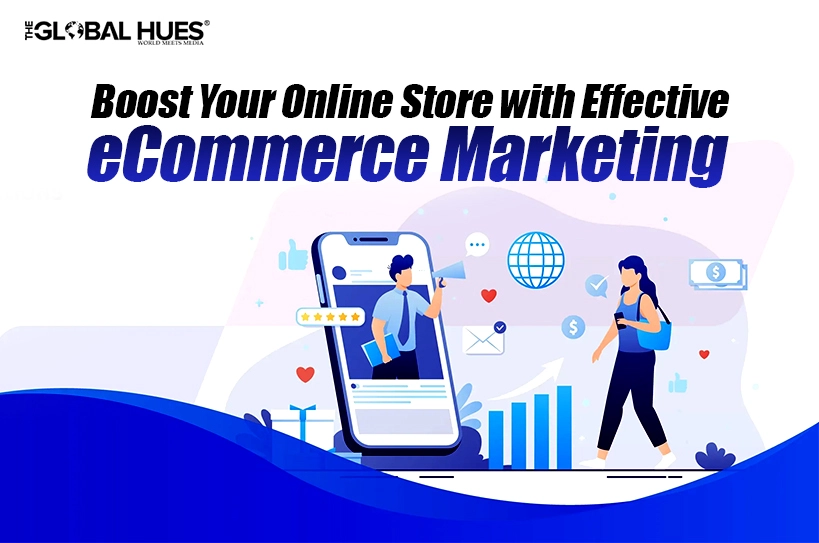In today’s digital age, having a strong online presence is essential for any business, especially for those in the eCommerce sector. As more consumers turn to online shopping, eCommerce marketing has become a vital component of business success. This article will explore various eCommerce marketing strategies, including eCommerce SEO, PPC, optimisation techniques, and website design, to help your online store thrive.
What is eCommerce Marketing?
eCommerce marketing refers to the strategies and tactics used to promote and sell products or services online. The goal is to attract potential customers to your online store, convert them into buyers, and keep them coming back for more. Effective eCommerce marketing combines various techniques, including search engine optimisation (SEO), pay-per-click advertising (PPC), website design, and user experience optimisation.
eCommerce SEO: Driving Organic Traffic
One of the most important aspects of eCommerce marketing is SEO. eCommerce SEO focuses on optimising your online store to rank higher in search engine results. Higher rankings lead to increased visibility, which can translate into more traffic and sales.
Key Elements of eCommerce SEO
Below are the key elements of eCommerce SEO:
-
Keyword Research
Start by identifying the keywords your target customers are using to find products similar to yours. Use tools like Google Keyword Planner or Ahrefs to find relevant keywords with high search volumes. Focus on long-tail keywords that are more specific and less competitive.
-
Optimising Product Pages
Each product page should be optimised for search engines. Include keywords in the title, description, and image alt tags. Make sure your product descriptions are informative, engaging, and unique to avoid duplicate content issues.
-
Creating Quality Content
In addition to product descriptions, consider adding a blog to your eCommerce site. Writing articles related to your products can help attract visitors and improve your search engine rankings. For example, if you sell kitchen appliances, you could write blog posts about cooking tips or recipes.
-
Mobile Optimisation
With a significant portion of online shopping done on mobile devices, ensuring your eCommerce site is mobile-friendly is crucial. Use responsive design to ensure your site looks good and functions well on all devices.
-
eCommerce PPC: Instant Traffic
While SEO is a long-term strategy, PPC advertising can provide immediate traffic to your online store. PPC involves paying for ads that appear in search engine results or on social media platforms.
Benefits of eCommerce PPC
Let’s look into some of benefits of eCommerce PPC:
-
Targeted Advertising
PPC allows you to target specific audiences based on demographics, interests, and behavior. This means your ads will be shown to people more likely to be interested in your products.
-
Budget Control
With PPC, you have control over your advertising budget. You can set daily or monthly limits, ensuring you don’t overspend.
-
Measurable Results
PPC campaigns provide detailed analytics, allowing you to track performance and make adjustments as needed. You can see which ads are driving traffic and sales, helping you optimise your campaigns.
Here’s how you can get started with eCommerce PPC
-
Choose Your Platform
Decide where you want to run your ads. Google Ads is a popular choice for search advertising, while Facebook and Instagram are great for social media ads.
-
Create Compelling Ads
Write attention-grabbing ad copy and use high-quality images. Highlight promotions or discounts to encourage clicks.
-
Landing Page Optimisation
Ensure that the landing pages for your ads are optimised for conversions. The page should be relevant to the ad, load quickly, and have clear calls to action.
-
eCommerce Optimisation
Optimising your eCommerce site goes beyond SEO and PPC. It involves improving the overall user experience to increase conversion rates and customer satisfaction.
Key Aspects of eCommerce Optimization
-
Site Speed
A slow-loading website can lead to high bounce rates. Use tools like Google PageSpeed Insights to check your site’s speed and make necessary improvements, such as optimising images and reducing server response time.
-
Easy Navigation
Your online store should be easy to navigate. Use clear categories and filters to help customers find products quickly. A well-organised site encourages shoppers to explore more.
-
Streamlined Checkout Process
The checkout process should be simple and efficient. Reduce the number of steps required to complete a purchase, offer guest checkout options, and provide various payment methods.
-
Customer Reviews
Encourage customers to leave reviews on your product pages. Positive reviews build trust and can influence purchasing decisions.
Shopify SEO and Web Design: A Winning Combination
For many eCommerce businesses, using platforms like Shopify can simplify the process of setting up and managing an online store. However, even with a great platform, you still need to focus on SEO and web design.
Benefits of Shopify for eCommerce
-
User-Friendly Interface
Shopify offers an intuitive interface, making it easy for even beginners to set up their online stores.
-
Built-in SEO Features
Shopify includes various built-in SEO features, such as customizable title tags and meta descriptions. Take advantage of these features to optimize your store for search engines.
-
Responsive Themes
Shopify provides a range of responsive themes, ensuring your online store looks great on all devices.
Shopify Web Design Tips
-
Choose the Right Theme
Select a theme that aligns with your brand and showcases your products effectively. Ensure that the design is clean and visually appealing.
-
Optimise Images
Use high-quality images for your products and optimise them for faster loading times. Compress images without losing quality to improve site speed.
-
Include Clear Calls to Action
Use buttons like “Add to Cart” or “Shop Now” prominently on your site to guide customers toward making a purchase.
eCommerce Web Design: The Importance of First Impressions
Your website is often the first interaction customers have with your brand, making eCommerce web design crucial. A well-designed website can create a positive first impression and encourage customers to explore your products.
Key Elements of Effective eCommerce Web Design
-
Consistent Branding
Ensure that your website reflects your brand identity. Use consistent colors, fonts, and imagery throughout your site.
-
Responsive Design
As mentioned earlier, your website should be mobile-friendly. A responsive design ensures a seamless shopping experience across all devices.
-
User-Friendly Layout
Organise your products in a way that makes sense. Use categories and subcategories to help customers find what they’re looking for easily.
-
Trust Signals
Include trust signals like security badges, customer reviews, and clear return policies to reassure customers about making a purchase.
Conclusion
eCommerce marketing is essential for any business looking to succeed in the online marketplace. By focusing on strategies like eCommerce SEO, PPC advertising, website optimisation, and effective web design, you can attract more customers, increase sales, and build a loyal customer base. As the eCommerce landscape continues to evolve, staying up-to-date with the latest trends and best practices will help your online store thrive in a competitive market.



